Right Foot First – Part 2
In the first part, we discussed the broadly classified three different foot types that you may have based on arch and pronation. In this second part, I will discuss, what actually happens when you walk or run with each foot type and how we can try to correct it with appropriate footwear.
A) LOW ARCH ( Flat foot )
1) Pronation type – Overpronation
2) What it means – Foot begins with making an impact with the outside of the heel and then rolls inwards more than the expected 15º
3) Mechanics of impact – Foot lands more on the inside of the foot and the ankle has problems stabilising the body. Shock is not absorbed efficiently.
4) Stress area – Big toe and bones next to
5) How to correct – Control excessive inward rolling of the foot by providing extra stability and countering the motion
6) Type of Shoe – MOTION CONTROL / EXTRA STABILITY SHOES ( details below )
B) HIGH ARCH
1) Pronation type – Under Pronation also called as Supination.
2) What it means – Foot initially makes an impact with the outside of the heel, but then continues to roll on the outside of foot instead of inside.
3) Mechanics of Impact – Impact is forced to a concentrated area on the outside of the foot and when pushing off, the shock is absorbed by the same.
4) Stress area – Smaller toes and then directly on the ankle and knee.
5) How to correct – allow and encourage free movement of the foot and inward rolling.
6) Type of Shoe – Cushioned Shoe ( Details below )
C) NEUTRAL ARCH
1) Pronation type – Neutral
2) What it means – Foot making an impact with the outside of the heel and rolling inwards up to the ball of the great toe smoothly about 15º inwards
3) Mechanics of impact – Impact is distributed proportionately while pushing off evenly from the ground.
4) Stress area – No stress on any particular part due to even shock absorption
5) How to correct – No correction needed
6) Type of Shoe – Combination of stability and cushioned shoes. Most shoes fall into this category.
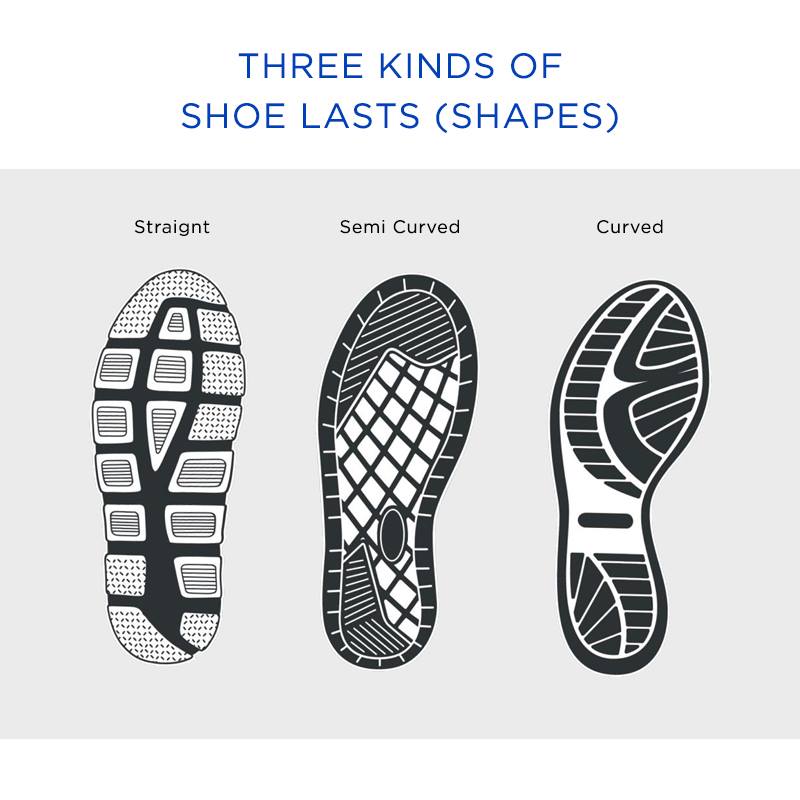
THREE MAJOR TYPES OF SHOES
These are classified based on some main features and designs which either limit or enable certain type of foot movement. The relevant considerations are –
1) Medial or Inside post – part of the sole which extends on the inner of shoe. ( shown in image) This is usually indicated by a different colour or shade or any additional attachment.
2) Heel counter – The part of the Shoe which fits and covers the Heel on the back.
3) Midsole – The support on the undersurface of the foot
4) Flexibility- Ability of the shoe to twist and fold on itself.
5) Last ( shape of the shoe from below )
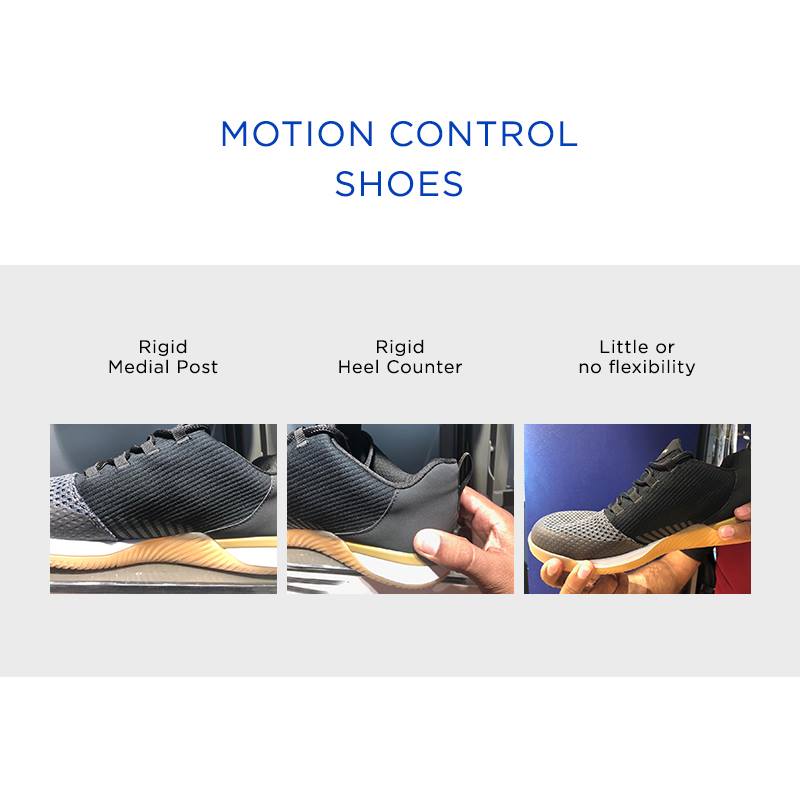
A) Motion-control shoes
– purpose to provide maximum stability and control inward roll.
1) Medial post – Firm and Rigid
2) Heel Counter – Least flexible, rigid, snuggly fitting
3) Midsole – Firm midsole providing arch support
4) Flexibility- No flexibility, thick overlay
5) Last – Straight
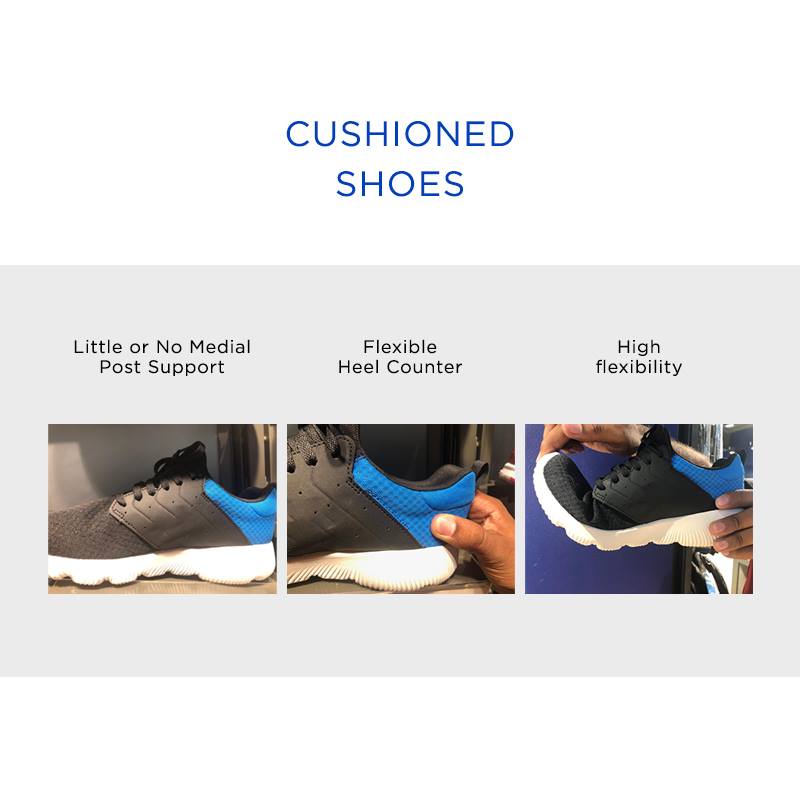
B) Cushioned Shoes
– the purpose is to enable inward movement and flexibility
1) Medial Post – thin or absent. In fact, Cushioning on outside to counter outward roll
2) Heel Counter – Soft, Cushioned and flexible
3) Midsole – Soft and Cushioned for extra shock absorption
4) Flexibility- Most flexible
5) Last – Curved Last
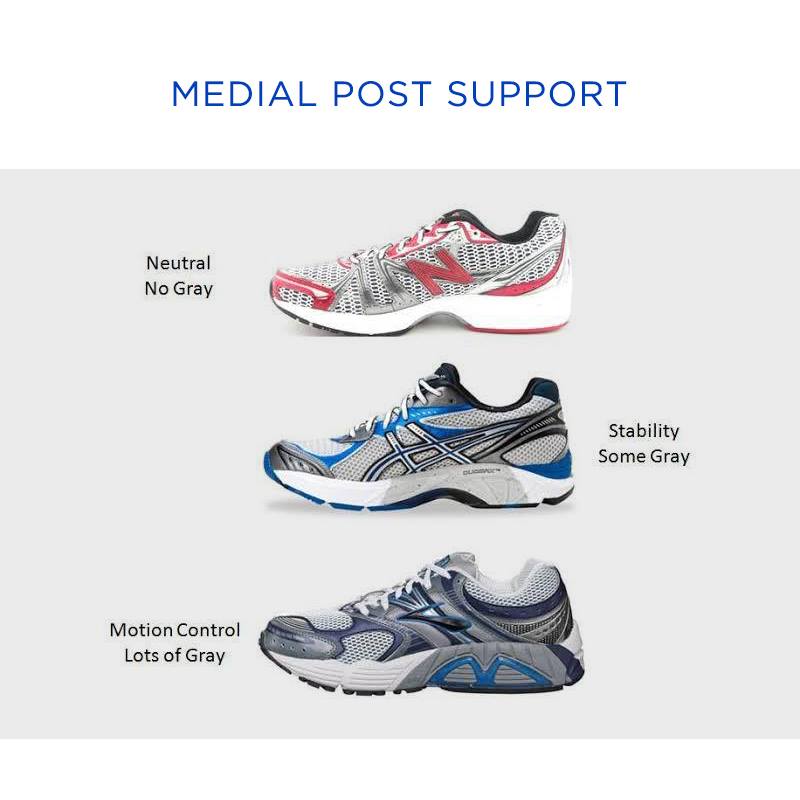
C) Neutral Stability Shoes – allow natural movement
Have a modest combination of above features with a Semi Curved Last.
Also, remember that always trust your own comfort level rather than shoe descriptions. There are still ways to give you the same result by adding some insoles (after measurement and studying your gait) in the same shoe you are most comfortable in.
#Trekking #Jogging #Walking #Running #Marathon #KnowYourFeet #RightShoes

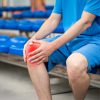
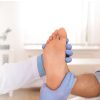
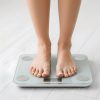
Leave a Reply